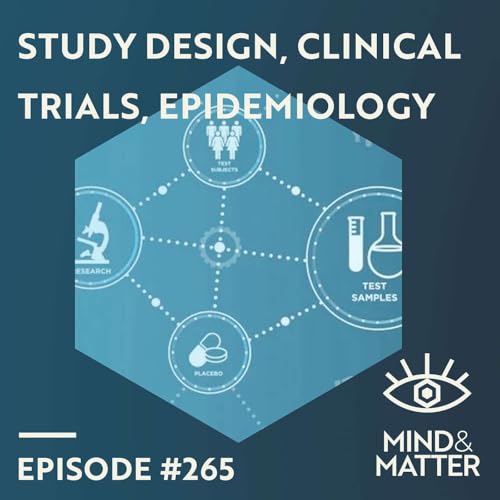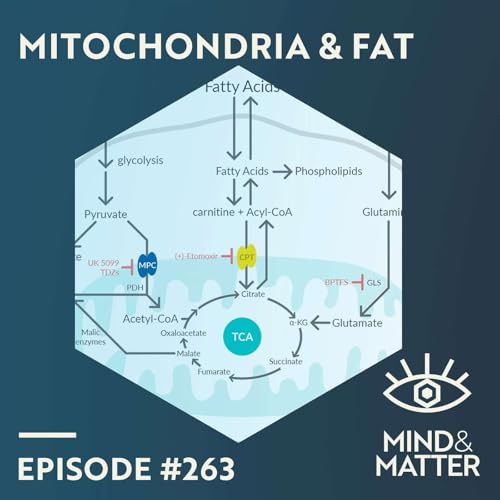Send us a text
Mitochondrial fatty acid synthesis is a little-known but essential pathway that supports energy production and metabolic health.
Summary: Dr. Sara Nowinski explains how mitochondria not only burn fuels to make ATP but also synthesize their own fatty acids inside the matrix; this conserved pathway produces lipoic acid (an essential enzyme cofactor) and longer-chain fats required for proper assembly of the electron transport chain, and disrupting it impairs respiration, glucose handling, and insulin sensitivity while enhancing it appears protective against obesity and heart injury.
About the guest: Sara Nowinski, PhD is an assistant professor in the Department of Metabolism and Nutritional Programming at Van Andel Institute in Grand Rapids, Michigan, where since 2021 she has led a lab focused on mitochondrial biology and the mitochondrial fatty acid synthesis (mitoFAS) pathway.
Topics Discussed:
- Basic mitochondrial energy production: food → pyruvate/fatty acids → acetyl-CoA → TCA cycle → electron transport chain → ATP
- Mitochondrial fatty acid synthesis (mitoFAS): a bacterial-like pathway that builds fats on an acyl carrier protein inside the matrix
- Lipoic acid: an 8-carbon fatty acid made only by mitoFAS, covalently attached to key enzymes (e.g., pyruvate dehydrogenase); cannot be rescued by supplements for cofactor use
- Longer mitoFAS products (14–16 carbons) stabilize electron transport chain assembly factors, explaining why pathway loss collapses respiration even when lipoic acid is intact
- Knocking out mitoFAS causes embryonic lethality, insulin resistance, poor glucose homeostasis, and a rare neurodegenerative disorder (MEPAN syndrome)
- Overexpressing the mitochondrial acyl carrier protein protects mice from diet-induced obesity, insulin resistance, and cardiac injury
- Muscle cell differentiation fails without mitoFAS, hinting at a role in tissue development and repair
Practical Takeaways:
- Supplemental lipoic acid can act as an antioxidant but cannot replace the lipoic acid your mitochondria must make themselves for enzyme function.
- Severe impairment of mitochondrial fatty acid synthesis is linked to insulin resistance and metabolic disruption, suggesting mitochondrial health (beyond just biogenesis) matters for glucose control.
*Not medical advice.
Support the show
Affiliates:
- Lumen device to optimize your metabolism for weight loss or athletic performance. MINDMATTER gets you 15% off.
- AquaTru: Water filtration devices that remove microplastics, metals, bacteria, and more from your drinking water. Through link, $100 off AquaTru Carafe, Classic & Under Sink Units; $300 off Freestanding models.
- Seed Oil Scout: Find restaurants with seed oil-free options, scan food products to see what they’re hiding, with this easy-to-use mobile app.
- KetoCitra—Ketone body BHB + electrolytes formulated for kidney health. Use code MIND20 for 20% off any subscription (cancel anytime)
For all the ways you can support my efforts
 Dec 26 20251 h y 52 m
Dec 26 20251 h y 52 m Dec 21 20251 h y 50 m
Dec 21 20251 h y 50 m 1 h y 25 m
1 h y 25 m Dec 12 20251 h y 41 m
Dec 12 20251 h y 41 m 1 h y 31 m
1 h y 31 m 1 h y 26 m
1 h y 26 m 1 h y 24 m
1 h y 24 m 57 m
57 m
